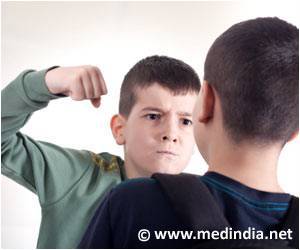- APA Resolution on Bullying Among Children and Youth - (https://www.apa.org/about/policy/bullying.pdf)
- Bullying - (https://en.wikipedia.org/wiki/Bullying)
- Kids Against Bullying - (http://www.pacerkidsagainstbullying.org/kab/)
- Stop Bullying - (https://www.stopbullying.gov/index.html)
- Smith PK1, Monks CP. Concepts of bullying: developmental and cultural aspects. Int J Adolesc Med Health. 2008 Apr-Jun;20(2):101-12.
- Schneider SK, O'Donnell L, Stueve A, Coulter RWS. Cyberbullying, School Bullying, and Psychological Distress: A Regional Census of High School Students. American Journal of Public Health. 2012;102(1):171-177.
What is Bullying?
Bullying is a form of aggressive behavior intended to cause harm to the child being bullied.
It is a repetitive behavior that usually occurs due to an imbalance of power. The child who bullies uses his social and physical strength to control the child being bullied.
Bullying can be direct - that which affects the person or the group targeted directly like hitting or teasing. It can also be indirect - where the person who bullies affects another psychologically by spreading rumors about them, or by alienating or excluding them.

Both the person bullying and the person being bullied may end up being affected seriously.
Bullying usually occurs during physical education classes and in places like the cafeteria, hallways, libraries, bathrooms, buses, playgrounds and during group or after school activities.
Bullying in schools is a universal problem. The severity of the problem may vary from school to school. It occurs in cities, suburbs or rural towns. Many schools have been forced to evaluate their teaching methods and add new policies on anti-bullying behavior.
Research shows that bullying can be significantly reduced through comprehensive, school-wide prevention programs to change behavior.
Forms of Bullying
- Physical - Injury to a person’s body or possessions.
Hitting, kicking, pinching, spitting, tripping, pushing, taking or damaging someone’s belongings, making rude hand gestures and sexual assaults.
- Verbal - Insult a person through words.
Teasing, name calling, taunting and threatening.
- Social or relational - Hurt someone’s reputation or relationship.
Alienating someone on purpose by telling others not to become friends with them or by embarrassing them in public or by spreading rumors about them.
- Cyberbullying - Use of electronic technology as a communication tool.
Cell phones, computers and tablets are the devices used to communicate or bully through social media sites, text messages, chats and websites.
Examples of cyberbullying are sending rude text messages and emails to someone or posting embarrassing pictures and videos about someone on social sites.

Points to remember:
- Bullying is different from other forms of aggression like conflict between peers.
- Bullying takes place in various socio-economic and population (urban, suburban and rural) groups. Research shows that no racial differences exist in bullying.
- Boys are more likely to report physical bullying whereas girls are more likely to report bullying involving rumor-spreading and sexual commenting.
- Girls report about being bullied by boys and girls whereas boys report being bullied only by boys.
- An adult is notified about bullying in less than 40% of the cases.
- 5-15% of youth get bullied while 7-12% always bully others.
Kids Play Different Roles in Bullying
A kid should not be labeled as a “bully” or a “victim” at any point because they can play multiple roles over time depending on situations and other factors involved like peer influence or school climate.
Researchers talk about the “circle of bullying” where kids can transition themselves from one role to the other. They can bully others or get bullied or just witness a bullying incident.
1. Kids can play direct roles:
- They can be the person who is bullying. In this case, they require support to change their behavior and the challenges that influence their behavior.
- They can be bullied. These kids have some characteristics that put them more at risk; they need help to learn how to respond.
2. Kids can play indirect roles:
- Some kids serve as “assistants” to the bullies. While they do not bully, they encourage them and occasionally join in.
- Some kids reinforce the bullying by being a part of an audience. They laugh or provide support. This encourages the bullying to continue.
- Some kids are outsiders. They remain separate. They do not support the bully nor do they defend the person being bullied. They just watch and do not provide any feedback; they want to help but do not know how to. They indirectly become the audience to the person bullying, thus encouraging the behavior.
- Some kids defend the child being bullied by actively comforting them.
What Makes Kids Bully or Be Bullied?
There is no single cause that encourages bullying. It is a combination of individual, peer, family, school and community reasons.
Who gets bullied?
Children who are -
- Of a different race, ethnic background, religion, sexual or gender identity (lesbian, gay, bisexual and transgender).
- Perceived physically different like children who are overweight or underweight, who wear glasses or different clothing and those who are not able to afford clothes or shoes that are considered “cool”.
- Mentally challenged or depressed or anxious.
- New to school.
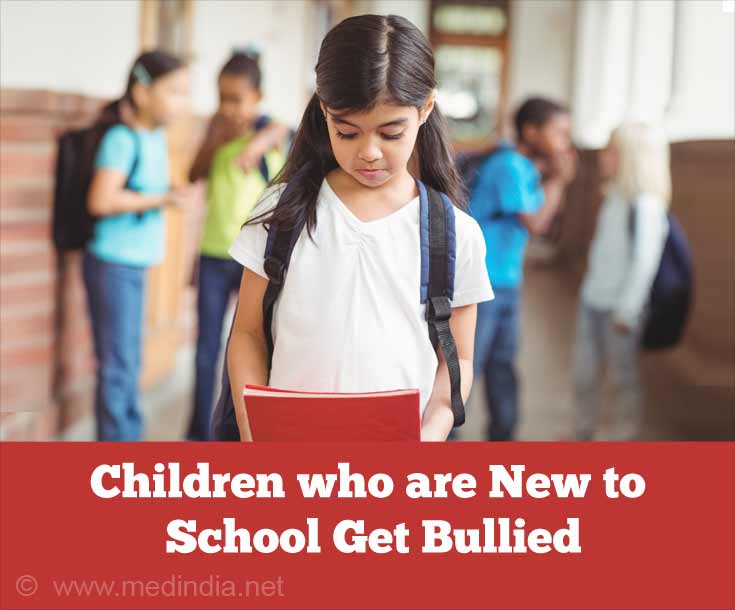
- Weak or unable to defend themselves.
- Less popular.
- Have low self-esteem or are socially isolated.
- Annoying or antagonize others for attention.
There are two types of kids who are more likely to bully others:
- Those who have well-connected peers, have social power, want to be popular and want to intimidate or dominate others.
- Those who are isolated, depressed or anxious, have low self-esteem, are less involved in school and are easily pressured by peers.
Children who bully are those who -
- Are aggressive or easily frustrated.
- Face extra strict parenting and physical disciplining at home.
- Have a poor step parent-child relationship.
- Have unstable homes.
- Experience domestic violence and constant quarrels among parents.
- Face abuse at home.
- Live in a single parent household or where adult role models are absent.
- Have exposure to gang activity.
- Have in born qualities of toughness and authoritarianism.
- Want people to look up to them and try to achieve this by acting tough.
- Once were victims of bullying at some point of their life and hence bully others as a defense mechanism.
- Think badly of others.
- Have difficulty following rules.
- Are addicted to television or games involving violence; they think violence is positive.
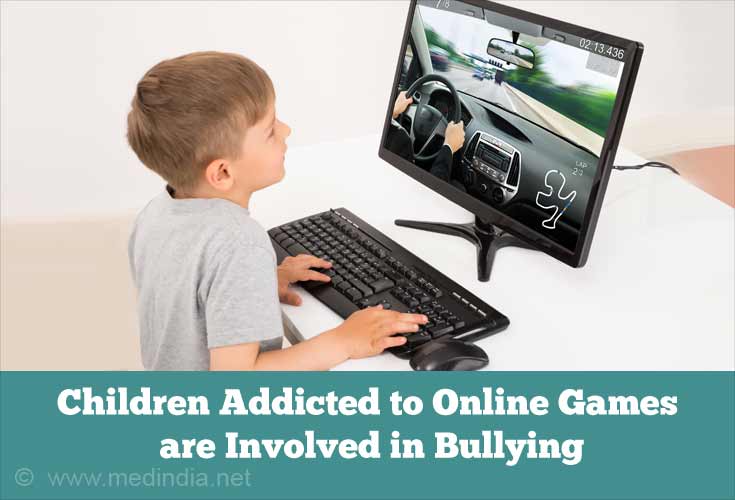
- Have friends who bully.
The power imbalance between the two sides is not that of size but rather due to popularity, strength and cognitive ability.
Warning Signs of a Child Involved in Bullying
Children who are being bullied can -
- Have unexplainable injuries.
- Pretend to be sick like having a headache or a stomach ache.
- Show changes in eating and sleeping habits.
- Have damaged or lost possessions.
- Avoid social situations.
- Have decreased self-esteem.
- Have self-destructive behavior.
These children do not ask for help because they -
- Fear being seen as weak or as a tattletale.
- Fear backlash from the bully.
- Feel humiliated if adults know about it.
- Do not want to be judged or punished by adults.
- Feel socially isolated and depressed already and hence do not think it will help the situation.
- Fear being rejected by peers.
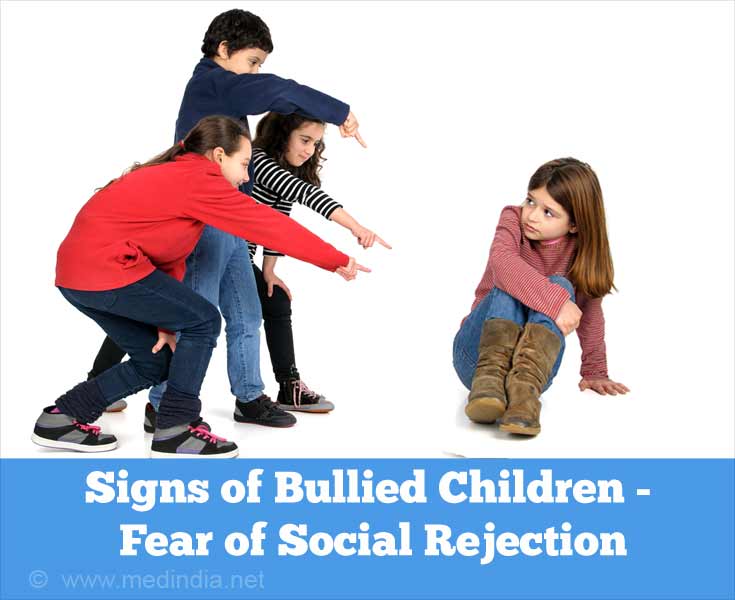
Children who bully usually -
- Have physical or verbal fights.
- Are aggressive.
- Get sent to the principal’s room or on detention.
- Have unexplained money or new things.
- Blame others for their problems.
- Do not accept responsibility.
- Are competitive and worried about their reputation.
- Are associated with those who bully.
Who gets Affected in Bullying?
Negative outcomes occur to all kinds of kids involved actively or passively.
Children who get bullied have -
- Health complaints ranging from mental changes like depression, feeling sad, loneliness and anxiety to physical changes like changes in sleep and eating and losing interest in activities. These persist in adulthood.
- Decreased academic achievement - Low grade point average (GPA) and standardized test scores and school participation. They are more likely to miss, skip, or drop out of school.
Children who bully -
- Are anti-social.
- Engage in violent and other risky behavior even as adults.
- Get addicted to alcohol, smoking and other drugs in adolescence and as adults.
- Get into fights and vandalize property.
- Drop out of school.
- Engage in early sexual activity.
- Have criminal convictions and traffic citations as adults.
- Can carry weapons.
- Are abusive toward their romantic partners, spouses, or children as adults.
Children who are bystanders also get affected to some extent. They tend to have increased mental issues like depression and anxiety, use more alcohol and other drugs and miss or skip school.
Preventing Bullying in Schools
1. Bullying has to be stopped before it starts.
Anonymous survey forms can be given to students and staff to -
- Determine the frequency and locations of bullying.
- Assess trends and types of bullying.
- Get the perceptions of staff and students on bullying and safety respectively.
- Assess how adults and peers intervene on this issue.
- Assess if prevention and intervention are working.
2. Parents and youths have to be involved to maintain a climate of respect and inclusion.
- Parents can contribute to a positive school climate through parent teacher meetings, volunteering and improvement events.
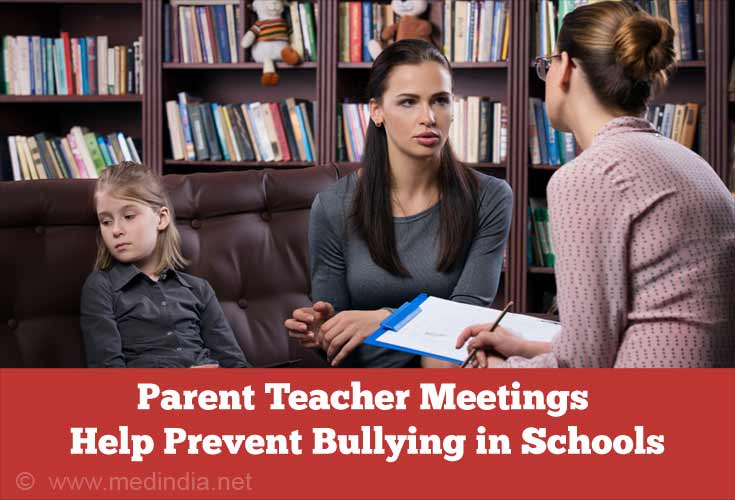
- Students can take on leadership roles to communicate with peers on prevention of bullying and help the school in developing school rules and policies.
- Involvement makes students feel safer and parents worry less; parents tend to support messages sent about bullying from school and can recognize signs of bullying.
A school safety committee has to be established to address safety concerns and to implement prevention and intervention programs. Involving various groups spreads more awareness. The incidences have to be investigated in confidence.
The school committee should comprise of
- School administrators.
- Teachers with strong classroom and peoples’ skills.
- School psychologists and counselors.
- School nurses.
- Librarians.
- Bus drivers.
- Parents who can share their family viewpoint and keep other parents in the loop.
- Students who can help identify real-life challenges.
- Other community stakeholders like police officers and healthcare providers.
3. School policies and rules have to be created.
- Establish a school mission statement about what the vision of the school is and how the students can help towards maintaining it.
- Establish a conduct code on standards of behavior emphasizing on what is positive behavior.
- Establish school wide rules and policies that involve students and parents.
- Involve other schools in the district so you can work as a team.
- Have an anti-bullying week every year on the same day to create awareness.
- Establish a bullying reporting system with clear procedures for rule violations and reasonable consequences; reporting should be kept private and confidential.
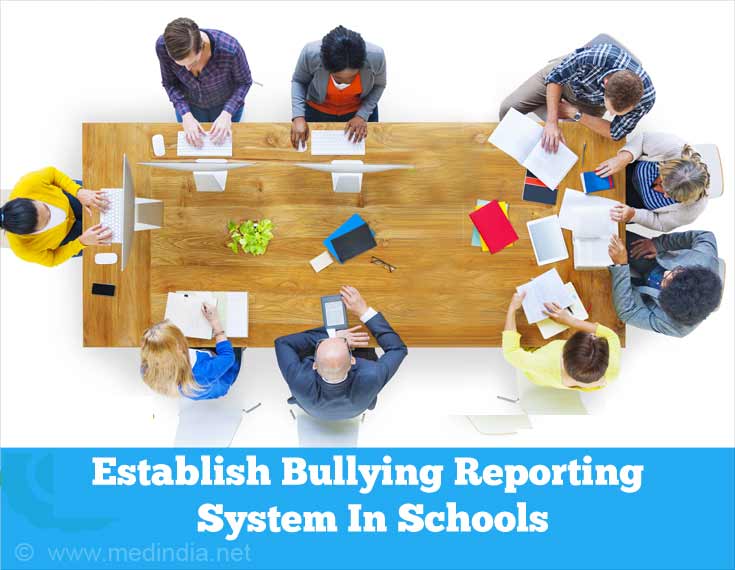
4. Make students feel safe everywhere on campus.
- Use the school website, newsletters to students, student’s handbooks, assemblies, staff meetings and parent teacher meetings to reinforce social interactions and inclusiveness.
- Monitor bullying “hotspots”; involve staff and other people like bus drivers, office staff, librarians and school nurses to help identify these places and incidents,
- Set a tone of respect in the classroom.
- Have regular classroom meetings to reinforce classroom rules; focus on topics like bullying or respectful behaviors; discuss positive situations; end by telling students that it is everyone’s job to make their school a positive place.
- Reward students who respect others’ positive behavior.

Train staff and students on school rules and policies to prevent and address bullying.
- Conduct lessons and activities like internet or library research, presentations, discussions, creative writing and classroom meetings.
- Engage in role-play and talk about how the characters and the students watching the role-play felt.
- Implement formal evidence-based programs in elementary and middle school.
- Conduct staff training through staff meetings and one-day trainings.
- Give staff the tools to respond to bullying.
5. Important to follow-up.
- Monitor and evaluate the effectiveness of the strategies and policies.
- Conduct periodical assessment of the problem and the staff’s commitment to tackle the issue.
Parents as Role Models
Parents are the first role models for their children. Children look up to their parents in the formative years and try to closely follow the examples set by them. It is imperative that parents be positive, pro-social models who lead by example so that their children learn to be emotionally intelligent and nurture loving relationships with all kinds of people. Parents should help children understand that values like honesty, courage, mercy, love and tolerance are as important as brilliant feats of mind and body.








